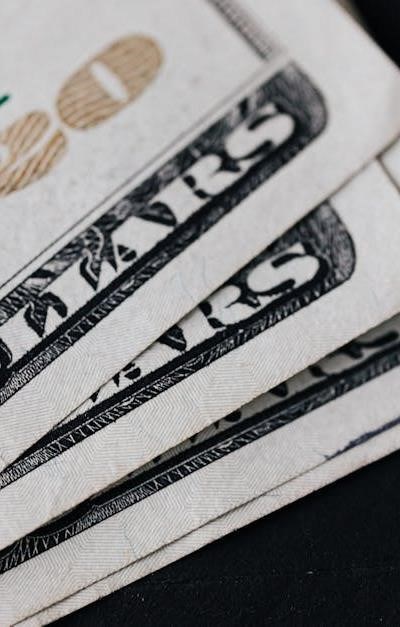Credit cards are powerful financial tools offering convenience and purchase power, but responsible use is crucial for maintaining financial health․ This article delves into understanding credit cards, managing debt, and building strong creditworthiness․
Understanding the Basics
A credit card allows borrowing funds from a lender to make spending․ Unlike a loan, it’s a revolving line of credit with pre-set limits․ Key terms include:
- APR (Annual Percentage Rate): The interest rates charged on your balance if not paid in full․
- Billing Cycle: The period between your statements, typically around 30 days․
- Due Date: The date your payments are due․
- Minimum Payment: The smallest amount you must pay each month․ Paying only this incurs significant interest․
- Late Fees: Charges for payments made after the due date․
- Credit Limit: The maximum amount you can charge․
- Credit Utilization: The amount of credit you’re using compared to your limits․ (Ideally below 30%)․
Building & Maintaining Good Credit
Your credit score is a numerical representation of your credit history, impacting your ability to secure loans, rent an apartment, and even get a job․ Factors influencing it include:
- Payment History: The most important factor․ Consistent, on-time payments are vital․
- Amounts Owed: Keeping your credit utilization low demonstrates responsible spending․
- Length of Credit History: A longer history generally improves your score․
- Credit Mix: Having a variety of credit accounts (cards, loans) can be beneficial․
- New Credit: Opening too many accounts at once can lower your score․
Regularly check your credit report for errors and signs of fraud․ You are entitled to a free report annually from each of the major credit bureaus․
Maximizing Benefits & Avoiding Pitfalls
Many cards offer rewards like cash back or travel points․ Choose a card aligning with your spending habits․ However, don’t overspend just to earn rewards․
Debt can quickly accumulate if not managed carefully․ Effective budgeting is essential․ Track your spending, prioritize needs over wants, and create a plan to pay down your balance․ Consider strategies like the debt snowball or debt avalanche method․
Security & Fraud Protection
Protect your card information․ Be wary of phishing scams and monitor your statements for unauthorized charges․ Report any suspected fraud immediately to your issuer․ Most cards offer zero-liability protection for fraudulent spending․
Financial Literacy & Planning
Understanding financial literacy is key to long-term financial planning․ Learn about interest rates, budgeting techniques, and the impact of credit on your overall financial health․
Managing debt effectively requires discipline and awareness․ Prioritize paying down high-interest rates debt first․ Avoid taking on more debt than you can comfortably repay․
Remember, a credit card is a tool․ Used responsibly, it can enhance your purchase power and build a strong credit profile․ Mismanaged, it can lead to significant debt and financial hardship․



This is a really well-written and comprehensive overview of credit cards! I especially appreciated the clear explanations of APR, billing cycles, and credit utilization. It
Excellent article! I found the section on building and maintaining good credit particularly helpful. Knowing *what* impacts your credit score is one thing, but the breakdown of each factor